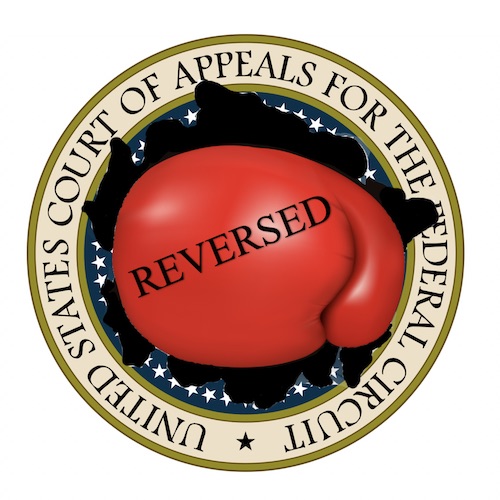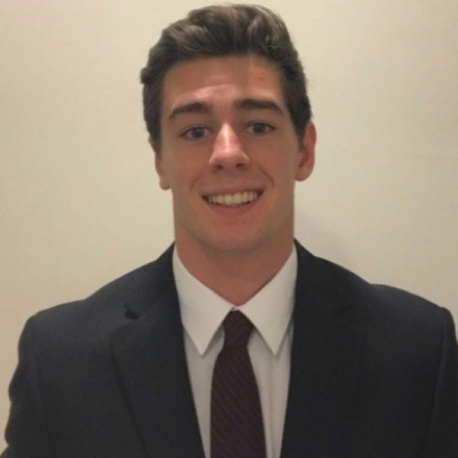“The text of [102(e)] requires only that the patent be ‘granted’ meaning the ‘grant’ has occurred[,] [t]he statute does not require that the patent be currently valid.”
 On May 28, the United States Court of Appeals for the Federal Circuit (CAFC) reversed a decision of the Patent Trial and Appeal Board (Board), holding certain claims of U.S. Patent No. 8,554,579 (the ‘579 patent) are invalid as obvious under 35 U.S.C. §103.
On May 28, the United States Court of Appeals for the Federal Circuit (CAFC) reversed a decision of the Patent Trial and Appeal Board (Board), holding certain claims of U.S. Patent No. 8,554,579 (the ‘579 patent) are invalid as obvious under 35 U.S.C. §103.
Baxter Corporation Englewood (Baxter) is the owner of the ‘579 patent, which discloses “[s]ystems for preparing patient-specific doses and a method for telepharmacy in which data captured while following [a protocol associated with each received drug order and specifying a set of steps to fill the drug order] are provided to a remote site for review and approval by a pharmacist.”
Becton, Dickinson and Company (Becton) petitioned for an inter partes review (IPR) of claims 1-13 and 22 of the ‘579 patent. Claims 2-7 and 22 depend, either directly or indirectly from independent claim 1, and claims 9-13 depend, either directly or indirectly from independent claim 8. In support of their assertion of invalidity, Becton relied primarily upon U.S. patent No. 8,374,887 (Alexander), U.S. patent No. 6,581,798 (Liff), and U.S. Patent Publication No. 2005/0080651 (Morrison). The Board concluded that Becton established that one having ordinary skill in the art would have sufficient motivation to combine Alexander and Liff, as well as Alexander, Liff, and Morrison. The Board did, however, note that Baxter’s evidence regarding secondary considerations was weak, that Alexander did not teach or render obvious the verification limitation, and that the combination of Alexander, Liff, and Morrison did not teach or render obvious the highlighting limitation. Therefore, the Board concluded that none of the challenged claims were unpatentable.
There are two claim limitations that were contested on appeal. The first relates to the “verification” limitation that appears in claim 8, but not claim 1. The second, relates to the “highlighting” limitation, which appears in both claims 1 and 8. Claim 8 recites in part, “an interactive screen that includes prompts that can be highlighted by an operator to receive additional information relative to one particular step…wherein each of the steps must be verified as being properly completed before the operator can continue with the other steps of drug preparation.”
The Appeal
The Verification Limitation
The CAFC first addressed the verification limitation of claim 8, which stated “wherein each of the steps must be verified as being properly completed before the operator can continue with the other steps of drug preparation process.” Neither party appealed the Board’s construction of the verification limitation, which it determined, requires that “the system will not allow the operator to proceed to the next step until the prior step has been verified.” The Board further determined that the plain language of the verification limitation does not require “automatic system functioning” to “trigger verification.” The Board found Baxter’s argument that Alexander “only discusses a ‘remote pharmacist may verify each step;’ not the remote pharmacist must verify each and every step before the operator is allowed to proceed” persuasive. The Board therefore determined that Alexander does not render the verification limitation obvious.
However, the CAFC concluded that “the Board’s determination is not supported by substantial evidence.” The CAFC noted, the passage of Alexander that the Board relied upon, in context, does not support the Board’s conclusion that “may” means “occasionally,” but rather the CAFC concluded, the word “may” means that one “may” choose to systematically check each step. Alexander relates to a system of and method for a pharmacist to supervise and remotely verify functions performed by a non-pharmacist. In the specification, Alexander provides that the non-pharmacist is not authorized to proceed until pharmacist verification is obtained. Therefore, the CAFC concluded that “[t]here is no significant difference” between Alexander and the verification requirement of the ‘579 patent, which the CAFC held, the Board construed properly, despite coming to an improper conclusion on the issue of obviousness.
Baxter also attempted to sustain the Board’s decision based on two grounds not adopted by the Board. First, Baxter contended that “Alexander does not disclose a system that would stop the operator from proceeding if a prior step was unverified, and that such an improperly prepared dose could go out to the patient and cause harm.” However, the CAFC relying on the concession made by Baxter’s counsel at oral argument that, in Alexander’s system, a non-pharmacist who proceeded without authorization could be disciplined, concluded that the non-pharmacist could not process their work without the requisite authorization. Baxter also argued that Alexander’s disclosure was insufficient because the verification limitation of the ‘579 patent requires a “mechanical…prohibition” on continuing the work absent verification. According to the Board’s construction, “the system will not allow the operator to proceed to the next step until the prior step has been verified,” and Baxter contends that the word system implies a mechanical stop. The CAFC rejects this notion as well, noting that nothing in the construction requires a mechanical stop as opposed to simply requiring authorization from a pharmacist to continue, nor does the specification of the ‘579 patent indicate that the “stop” cannot be in the form of instructions from a pharmacist.
Baxter also attempted to persuade the CAFC that the ‘579 patent is an improvement upon the “pull-back method” of pharmacist verification in sterile compounding. The “pull-back method” is a method of having a non-pharmacist perform sterile compounding under a pharmacist’s supervision. According to Baxter, this method allows to error in dose preparation of sterile compounds. Baxter argued that the ‘579 patent improved upon the “pull-back method” by requiring verification after each step rather than only at the end. However, the CAFC was not convinced and further concluded that the Board’s holding that Alexander does not teach the verification limitation of the ‘579 patent was incorrect.
The Highlighting Limitation
The CAFC next turned to the highlighting limitation of the ‘579 patent, which requires “an interactive screen that includes prompts that can be highlighted by an operator to receive additional information relative to one particular step.” The Board concluded that it would have been obvious to one of ordinary skill to provide a set of drug preparation steps on a computer, therefore, the only missing element is “the ability to highlight prompts to receive more information concerning drug preparation steps.” Liff teaches highlighting in the pharmacy context, however, the Board concluded that Dr. Young, the expert for Becton, “failed to explain why Liff’s teaching to highlight patient characteristics when dispensing a prepackaged medication would lead one of ordinary skill to highlight prompts in a drug formulation context to receive additional information relative to one particular step in that process, or even what additional information might be relevant.” The Board also, found, that Becton’s arguments regarding Morrison did not address the deficiencies in its position based on Alexander and Liff.
However, the CAFC disagreed with the Board’s finding. As Dr. Young testified, “a person having ordinary skill would have found it obvious to include in the user interface taught by Liff a tab for prescription order information regarding the prescription order that the operator was fulfilling.” Citing KSR, the CAFC noted that “the Supreme Court has made clear, ‘[t]he combination of familiar elements according to known methods is likely to be obvious when it does no more than yield predictable results.” KSR Int’l Co. v. Teleflex Inc., 550 U.S. 398, 416 (2007). Therefore, the CAFC reasoned, that the Board erred in looking at Liff alone, rather than considering what additional information might be relevant, because as KSR went on to state, “[a] person of ordinary skill is also a person of ordinary creativity, not an automaton.” KSR, 550 U.S. at 421. The CAFC therefore held, that the highlighting limitation would have been obvious in view of Alexander and Liff.
Not Prior Art
In the alternative, Baxter argued the Board’s determination of non-obviousness was improper because Alexander does not qualify as prior art under 35 U.S.C. §102(e)(2) (pre-AIA). However, the CAFC was not persuaded. The February 11, 2005 filing date of Alexander predates the October 13, 2008, filing date of the ‘579 patent. Despite this, Baxter argued that because the claims granted in Alexander were revoked on February 15, 2018 following an IPR, the patent should not qualify as 102(e) prior art. However, the CAFC reasoned, “[t]he text of [102(e)] requires only that the patent be ‘granted’ meaning the ‘grant’ has occurred[,] [t]he statute does not require that the patent be currently valid.”
Secondary Considerations
The Board, citing Graham, noted the evidence of secondary considerations presented by Baxter were “weak.” Graham v. John Deere Co. of Kansas City, 383 U.S. 1, 17 (1966). Baxter did not argue against this contention. However, citing ZUP, the CAFC reasoned that “weak evidence of secondary considerations simply cannot overcome the strong showing of obviousness. ZUP, LLC v. Nash Mfg., Inc., 896 F.3d 1365, 1375 (Fed. Cir. 3018).
Therefore, the CAFC held that the Board’s determination that the verification and highlighting limitations were not obvious was erroneous and not supported by substantial evidence, and accordingly reversed.
Image Source: Deposit Photos
Author: almoond
Image ID: 10042948

![[IPWatchdog Logo]](https://ipwatchdog.com/wp-content/themes/IPWatchdog%20-%202023/assets/images/temp/logo-small@2x.png)

![[Advertisement]](https://ipwatchdog.com/wp-content/uploads/2024/04/UnitedLex-May-2-2024-sidebar-700x500-1.jpg)
![[Advertisement]](https://ipwatchdog.com/wp-content/uploads/2024/04/Patent-Litigation-Masters-2024-sidebar-700x500-1.jpg)

![[Advertisement]](https://ipwatchdog.com/wp-content/uploads/2021/12/WEBINAR-336-x-280-px.png)
![[Advertisement]](https://ipwatchdog.com/wp-content/uploads/2021/12/2021-Patent-Practice-on-Demand-recorded-Feb-2021-336-x-280.jpg)
![[Advertisement]](https://ipwatchdog.com/wp-content/uploads/2021/12/Ad-4-The-Invent-Patent-System™.png)






Join the Discussion
No comments yet.